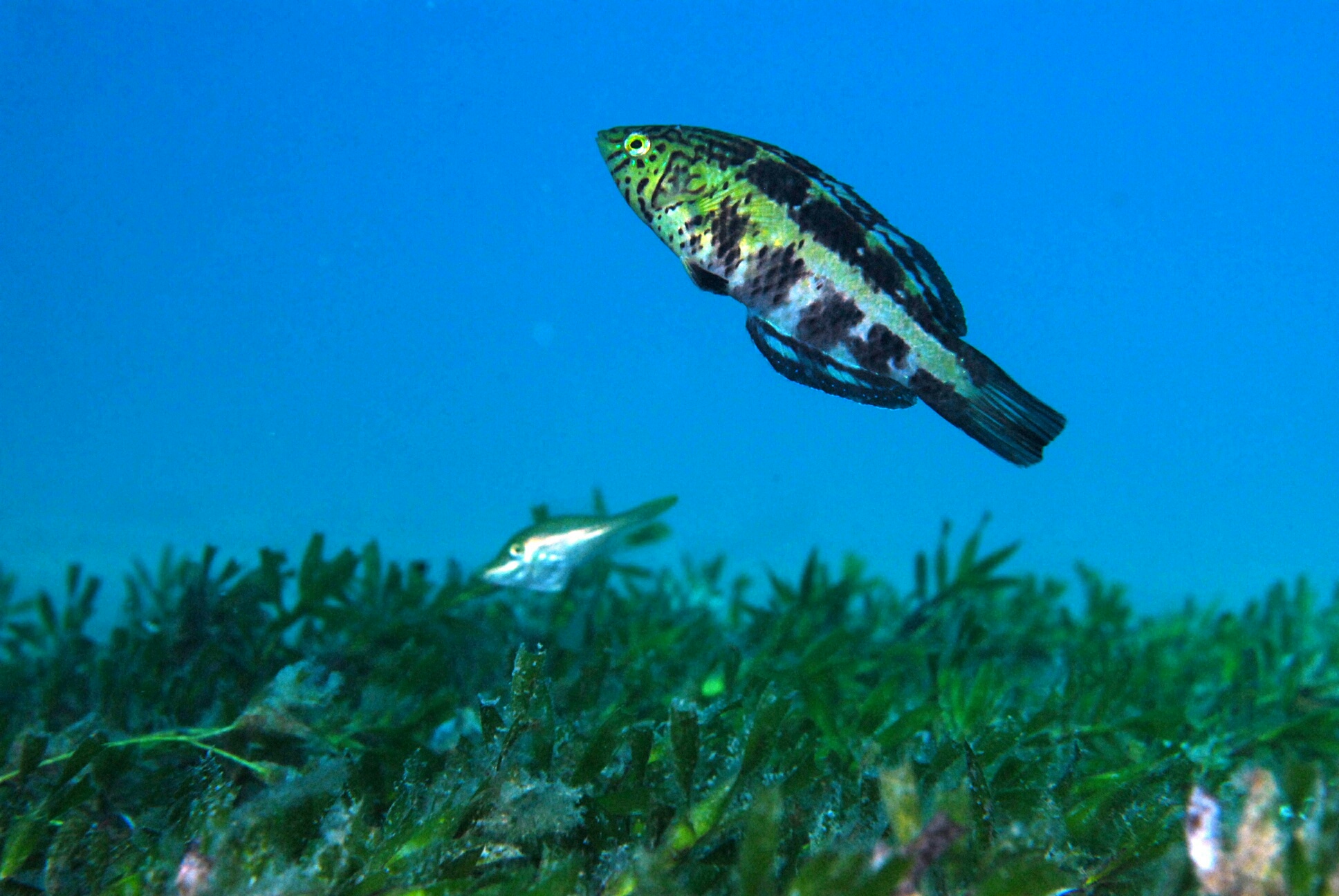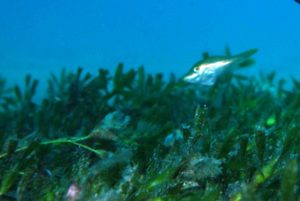This photo was taken at Rapid Bay between the old and new jetties:
The fish in the background, behind the adult Castelnau’s (aka Pretty polly) wrasse, is an older, juvenile Bridled leatherjacket. The leatherjacket is over a seagrass meadow, predominantly Amphibolis (aka ‘wireweed’).
The Bridled leatherjacket is one of our state’s smallest ‘leatheries’, and smallest of the several seagrass-dependent ‘niche habitat’ leatherjacket species commonly seen by divers here.
Adult and juvenile Bridled leatherjackets often intermix with juvenile Toothbrush leatherjackets (occasionally joined by a few small females, but rarely the adult males).
(Bridled leatherjackets and Toothbrush leatherjackets are in same genus, Acanthaluteres. The Bridled leatherjacket is A.spilomelanurus and the Toothbrush leatherjacket is A.vittiger. Coincidentally, the Toothbrush leatherjacket was first described by Castelnau (in 1873), one year after he had described Castelnau’s (aka Pretty polly) wrasse (in 1872). Castelnau’s wrasse is now known as Dotalabrus aurantiacus.)
These congregations can range from loose aggregations of as few as ten or so fish, up to quite large schools numbering a 100 or more, although anecdotally the ‘Bridleds’ usually outnumber the ‘Toothbrushes’.
Such schools are often seen foraging over shallow grass meadows (Posidonia, Amphibolis and Zostera), especially in our Gulfs, but also any coastal areas with suitable habitat e.g. low to moderate energy embayments dominated by grass meadows, including on the lee coasts of many of our larger offshore islands.
Male Toothbrush leatherjackets, which at maturity are considerably larger than adult Bridled ‘leatheries’ of either gender, are rarely found in these shallow depths, whether alone, with a fully grown female partner. (Divers do occasionally see breeding pairs in moderate depths e.g. on the ex-HMAS Hobart at 20-30 m depth off Rapid Bay/Rapid Head), or accompanying schools of either or both species.



